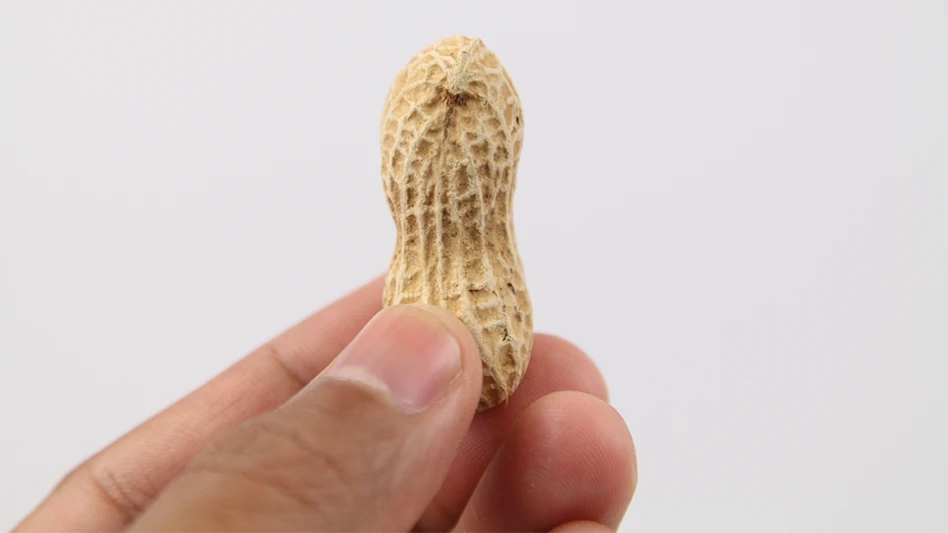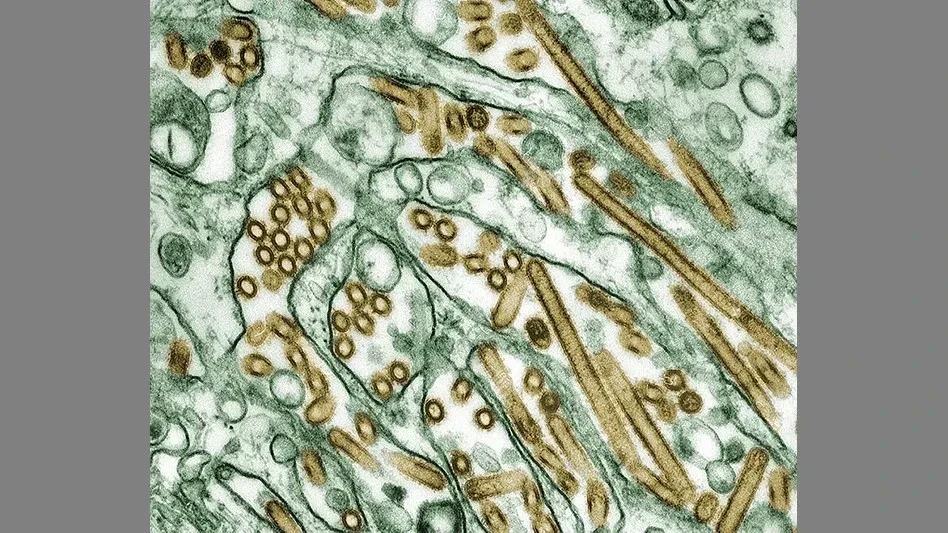To deal with winter issues in your plant, think WARM. Not palm-tree, beach and umbrella-drink warm, but Winter Accelerated Rodent Management (WARM).
The acronym, created by Dr. Jim Sargent, Copesan director of technical support and regulatory compliance, Menomonee Falls, Wis., provides a positive spin on what can be a common problem for food plants – keeping rodents from using your facility as a warm get-away from winter’s chill. "Winter is a good time to take the lead in man vs. rodent," Sargent says. "It’s a good time to get ahead of rodent problems."
So what exactly should we be doing to "get ahead"?
"Review your rodent management program to make seasonal or other modifications," Sargent says. While the greatest influx of rodents into buildings is usually with the first freeze of fall, rodents will continue to seek shelter throughout the cold months, and you may even have them moving into more central locations, if they decide the outer wall in which they’d been living is getting too cold.
To fight back in winter or any time of year, it is important to form a partnership with your pest management service provider and to have full knowledge of and review the history of rodent activity, sightings, treatment and captures in and around your building. Sit down with your technician to review your pest log book, noting sites and dates where rodent activity was recorded, treatment was increased, sanitation was required or other problems were found. Such historical information will help you assess your plant’s current, future and seasonal needs and enable you to determine where modifications need to be made for ensuring the most effective program possible.
Why is winter the best time to be doing this analysis?
Plants are most likely to encounter new rodent problems in the fall, because the populations build up during the ideal conditions of summer. Then as temperatures fall and food becomes scarce, the mice and rats seek out new areas of food and shelter. If you built up a strong rodent program in the fall, this defense should take you through the winter cold, even allowing a reduction of traps or stations in some areas as populations wind down. "If you can’t get the situation under control in winter," Sargent adds, "look out for next summer!"
What else should be done during the winter months?
Because weather can change dramatically from one year to the next – or one day to the next – the service technician and plant staff need to be flexible as to service. Be prepared and have a plan for all possibilities, Sargent says, asking, What will you do if the bait stations are covered with two feet of snow? What will you do if your area floods?
My service technician places rodent traps around the walls of my plant and by all the doors. Shouldn’t that be enough?
Rodents can come in on deliveries at any time of year, ending up in the center of the building in a pallet of raw product. One of the greatest mistakes that Jeff Weier, director of technical services for Sprague Pest Solutions in Tacoma, Wash., sees made in rodent management programs is a single minded commitment to treating only the periphery of buildings. "Although we tend to concentrate on perimeter control, don’t solely concentrate on peripherals," Weier explains. In his food plant inspections, Weier says he often sees pallets in the middle of a warehouse which could easily support rodent populations, with all the control equipment located around the periphery. If you have only contracted with your pest management provider for perimeter control, you may have to increase service specifications to include interior.
An employee saw a mouse in our administrative office area. Does this mean we have an infestation?
You can’t know from the sighting of a single mouse if it just came in or if you have an infestation, Weier says. The only way to know is to investigate further; to do a complete inspection. However, he adds, "It’s an important warning sign even in an office area. Ask: why is it there?" It’s hard to tell if the sighting of a single rodent signifies an infestation, says Stoy Hedges, manager of technical services for Terminix International, Memphis, Tenn. "One isn’t an infestation, but you don’t want to establish a population. Once they get into the building, something has failed and needs to be addressed," he says. "Notify your pest management provider to come out immediately to set traps to catch the rodents and to determine how they got in." Employee training and communication is very important to rodent management, particularly in the sighting of rodent activity or evidence. Employees should be mandated to immediately report any sightings to their supervisors, Sargent says. Rodents have no bladder control, so they trail urine everywhere they go and will leave droppings as well. "You wouldn’t tolerate a human defecating over your food supply and you shouldn’t tolerate rodents either." If you do, he says, "You may as well put a ‘Restroom’ sign right over your food plant."
We placed traps in the area that the mouse droppings were found, but we aren’t catching anything.
If you are finding evidence of rodents but not catching them in the equipment placed in the area, "you better start changing something," Sargent says. Relocate the devices; try different equipment or bait (where allowed); conduct a new inspection; inspect deliveries; etc.
Why are rodents such a problem in food plants? Aren’t there any basic steps I can take to keep them out?
The fact that food processing plants do just that – produce food – makes them very attractive to rodents, Hedges says. And because plants are usually located in areas conducive to mice and rat populations, there are generally plenty of rodents to attract. In addition to establishing a well-structured rodent management program using traps and bait stations, making your property less attractive to rodents is essential, Hedges says. This can be achieved through basic Good Manufacturing Practices in securing the integrity of your building through measures such as:
seal any holes that are of one-quarter inch or larger.
keep exterior piles (such as pallets) to a minimum and away from the building.
keep grass cut low so as not to provide rodent harborage.
clean up grain and other raw material spillage as soon as possible.
manage trash well, keeping bins clean, covered, and emptied regularly.
Can I put off maintenance repairs until the snow melts to make them easier?
Don’t decide to wait until spring to gain control or make corrections, Sargent says. Waiting will only lead to more damage, more rodents, more potential for health and economic effects, and higher control costs.
My maintenance team keeps my building in great shape, so I shouldn’t have to worry about rodents.
Too much reliance on basic maintenance programs for rodent control is one of the top mistakes Weier sees plants make. Because rodents can enter through such small spaces (¼ inch), and can come in with deliveries or even through open doors, Weier cautions plants to not rely on their maintenance program to maintain control of rodents. "Some plants feel that that’s all they have to do," he says.
My service technician recommended fumigation for rodents in my seed warehouse. Is that a good option or should we stick with traps?
Fumigation can be an option in certain areas, however be sure that the product is labeled for the specific application and that all federal, state and local regulations are known and followed. A few pros and cons of each would be:
Fumigation – Dow AgroSciences’ fumigant, ProFume, with the active ingredient sulfuryl fluoride, is now labeled for control of post-harvest rodent pests. Using this product in areas such as a seed warehouse, Sargent says, "you very easily could have all mice eliminated within hours." The downside of fumigation is that you can end up with a "smelly situation" from rodents dying in the warehouse, which can lead to other pest problems. But if you are confronting trap-shy rodents, this product can be an excellent tool for rodent management.
Trapping – "Traps are nice if the rodents will get into them," Sargent adds. But, when you do catch a rodent in a trap, you have it; you can remove the rodents and not contaminate anything else. "I would push toward trapping first. If it doesn’t work, then consider fumigation."
Every few years my region conducts a controlled burn, and we end up with an invasion of rodents. What can we do?
Food plants near green space or forest often face the issue of controlled burns for fire prevention, fire containment, or stimulation of seed germination; some areas plan such burns in the spring, others in the fall. Either way, the burns displace wildlife and can send mice and rats to your plant in search of shelter, Sargent says. In one night, you can end up with all your management devices filled with rodents. Find out how your community alerts the public, then watch for notice of such burns; when you find that one is coming up or being conducted, call your service professional immediately, saying, "Bring everything you’ve got!" Sargent says.
In general, what should I expect from my pest management provider as it relates to rodent control?
Your service provider should present a comprehensive rodent control program customized to your facility which includes, Hedges says, an inspection to determine entry points and rodent-conducive conditions, a baiting program, placement and maintenance of stations and traps, and regular service as deemed to be needed. The National Pest Management Association (NPMA) recently introduced Pest Management Standards for Food Plants, effective the first of this year. Although the new standards are not – or shouldn’t be – radically different from service currently being provided in your plant, they give guidance to pest management providers, allow provider assessment by food plants, and provide uniform, measurable criteria for auditors. Most auditors and providers expect to transition to the standards through 2007. (Visit www.pestworld.org for more information.)
Conclusion. While the cold of winter will bring rodents seeking shelter, preparation in early fall and continued vigilance through the year can keep rodents from finding sanctuary in your plant. But even with a strong program in place, plants and service professionals should follow three tenets for success: Don’t relax – keep looking for evidence of rodents; Be flexible in setting and modifying your program; and Take action sooner rather than later. QA
The author is a staff editor for QA magazine. She can be reached at llupo@gie.net.

Explore the March 2007 Issue
Check out more from this issue and find your next story to read.
Latest from Quality Assurance & Food Safety
- Nestlé Opens Arizona Beverage Factory and Distribution Center
- Ingredion Invests $100 Million in Indianapolis Plant to Improve Efficiency, Enable Texture Solutions Growth
- Eagle Unveils Redesigned Pipeline X-ray System
- USDA Invests Up To $1 Billion to Combat Avian Flu, Reduce Egg Prices
- Washington Cats Confirmed with HPAI as Investigation into Contaminated Pet Food Continues
- USDA Confirms Bird Flu Detected in Rats in Riverside
- Kyle Diamantas Named FDA’s Acting Deputy Commissioner for Human Foods
- QA Exclusive: Food Safety Leaders React to Jim Jones’ Departure, FDA Layoffs





